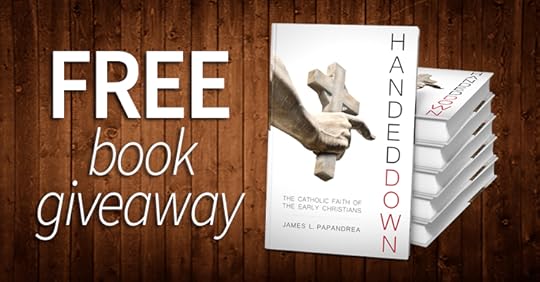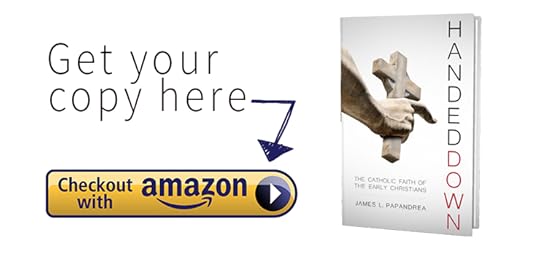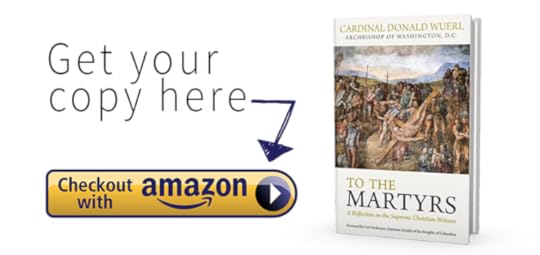Brandon Vogt's Blog, page 11
January 27, 2016
Learning from a Woman Leader of the Catholic Reformation

Today we continue our regular series called “Learning from the Saints.” Our guide is expert Bert Ghezzi, a dear friend of mine and the author of numerous books including Voices of the Saints, Saints at Heart, and Discover Christ: Developing a Personal Relationship with Jesus.
His more recent books are The Power of Daily Mass and The Heart of Catholicism. You can learn more about Bert and his work at BertGhezzi.com.
Today, Bert profiles St. Angela Merici, the patroness of sickness, handicapped people, and loss of parents
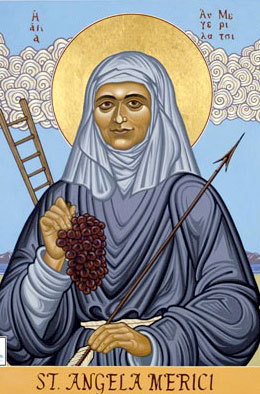 Women like St. Teresa of Avila and St. Catherine of Genoa contributed significantly to the Catholic Reformation. But in the sixteenth-century Church perhaps no woman responded more creatively to the need for reform than St. Angela Merici. She built communities that trained single women in Christian living and provided them a secure place of honor in their local societies.
Women like St. Teresa of Avila and St. Catherine of Genoa contributed significantly to the Catholic Reformation. But in the sixteenth-century Church perhaps no woman responded more creatively to the need for reform than St. Angela Merici. She built communities that trained single women in Christian living and provided them a secure place of honor in their local societies.A single lay woman herself, St. Angela established support groups for unmarried women of all classes in Brescia and other north Italian cities. She wanted the women to be in the world, but not of it. So they consecrated themselves to God and promised to remain celibate. But they lived at home with their families and looked for ways to serve their neighbors. In 1535, Angela organized the groups into the Company of St. Ursula, later called the Ursulines. Unique for its time, her avant-garde association anticipated modern secular institutes and covenant communities.
St. Angela gave the Ursulines a military structure, dividing towns into districts governed hierarchically by mature Christian women. This design allowed the community to support members in daily Christian living and protect them from spiritually unhealthy influences.
The rule that Angela wrote for the company required members to remain faithful to the Christian basics. In the following excerpt, she explains the importance of daily vocal and mental prayer:
“Each one of the sisters should be solicitous about prayer, mental as well as vocal, that is a companion to fasting. For Scripture says prayer is good with fasting. As by fasting we mortify the carnal appetites and the senses, so by prayer we beg God for the true grace of spiritual life. Thus, from the great need we have of divine aid, we must pray always with mind and heart, as it is written, ‘Pray constantly’ (1 Th 5:17; NJB). To all we counsel frequent vocal prayer that prepares the mind by exercising the bodily senses. So each one of you, every day will say with devotion and attention at least the Office of the Blessed Virgin and the seven penitential psalms (Ps 6, 32, 38, 51, 102, and 130) because in saying the office we are speaking with God.
“To afford matter and some method in mental prayer, we exhort each one to raise her mind to God and to exercise herself in it every day. And so in the secret of her heart, let her say:
“’My Savior, illumine the darkness of my heart, and grant me grace rather to die than to offend your Divine Majesty any more. Guard, O Lord my affections and my senses, that they may not stray, nor lead me away from the light of your face, the satisfaction of every afflicted heart.
“’I ask you, Lord, to receive all my self-will that by the infection of sin is unable to distinguish good from evil. Receive, O Lord, all my thoughts, words, and deeds, interior and exterior, that I lay at the feet of your Divine Majesty. Although I am utterly unworthy, I beseech you to accept all my being.'”
At St. Angela Merici’s death in 1540 she had started twenty-four groups. Over the years, the Ursulines have flourished as the oldest and one of the most respected of the church’s teaching orders.
To the long list of authorities Ursulines were to obey—Ten Commandments, church, parents, civil laws—St. Angela added “divine inspirations that you may recognize as coming from the Holy Spirit.” A refreshing and liberating rule. Also a dangerous one, for when it’s obeyed, the Holy Spirit may act in unexpected ways.
(Image Credit: Ascension Oak Park)
Read more from Bert at his website www.BertGhezzi.com, or check out his many books on Amazon.
The post Learning from a Woman Leader of the Catholic Reformation appeared first on Brandon Vogt.





January 25, 2016
Interview with Peter Kreeft – On C.S. Lewis, Philosophy, and Great Books
Dr. Peter Kreeft is is a professor of philosophy at Boston College and at the King’s College (Empire State Building), in New York City.
 He is a regular contributor to several Christian publications, is in wide demand as a speaker at conferences, and is the author of over 67 books including the Handbook of Catholic Apologetics, Christianity for Modern Pagans, and Fundamentals of the Faith.
He is a regular contributor to several Christian publications, is in wide demand as a speaker at conferences, and is the author of over 67 books including the Handbook of Catholic Apologetics, Christianity for Modern Pagans, and Fundamentals of the Faith.
He regularly writes on philosophy, theology, and culture, and he’s an expert on C.S. Lewis and J.R.R. Tolkien.
In my opinion, Dr. Kreeft is the closest thing we have to a twenty-first century Lewis. Nobody mirrors Lewis’ total package like Kreeft: his cunning wit, sharp thinking, baptized imagination, and love for story and wonder. Just listen to some of his talks to see what I mean.
Dr. Kreeft recently sat down with me to discuss C.S. Lewis, the New Atheism, philosophy, story, books, and much more. Enjoy!
Brandon: You’ve written several books on C.S. Lewis, including C.S. Lewis for the Third Millennium. One of the prominent threats to Christianity in this third millennium is the so-called New Atheism. It’s spearheaded by Richard Dawkins, an emeritus fellow at Lewis’ own alma mater. How would Lewis respond to this modern form of atheism?
Peter Kreeft: Atheists in C.S. Lewis’ day were as snobbish and arrogant as they are now, but better educated and more capable of debate. Anthony Flew, for example, was eminently fair and intelligent (and, of course, therefore eventually became a theist).
The atheists Lewis knew were more like “The Great Knock” in Surprised by Joy or MacPhee in That Hideous Strength, in that they were quite intellectually honest. I suspect Lewis would prefer not to cast his pearls before swine, so he would probably ignore the so-called “four horsemen” of New Atheism.
Brandon: Your newest book, Summa Philosophica, begins by praising two styles of argument and calling for their revival: the Socratic dialogue and St. Thomas’ disputatio. Why are these forms so valuable and why have they been lost?
Peter Kreeft: The Socratic method and the Summa article are both ways of making an issue clear and fair and presenting both sides in a very rational way. They have been lost because philosophy has degenerated into ideology. Objective truth itself is sometimes often seen as a right wing Republican-Christian plot to take over the government (though the rhetoric is cleverer than that, that’s the bottom line).
Brandon: It would be a severe understatement to say you like C.S. Lewis and J.R.R. Tolkien. You’ve written several books on their fiction, and in 2011 you followed their path with your own novel, An Ocean Full of Angels (which I reviewed here). Why is story so valuable in communicating truth, goodness, and beauty?
Peter Kreeft: Story is the oldest, commonest, most beloved, and most effective form of communication because our life is essentially a story. That’s why the Bible is the most realistic of religious books. We can easily ignore or argue away abstractions, but we bump up against concretely real people, things, and events in story, as in life. It is easier to compare concrete things in a fictional story with concrete things in real life than it is to compare abstractions with concrete things in real life (though both are honorable and necessary things to do).
Brandon: Moving on to a simpler question, who is your favorite saint and why?
Peter Kreeft: St. Augustine, who has the Lewis-like combination of passionate heart, beautiful style, and deep understanding.
Brandon: Outside the Bible and Catechism, what are the top five books you wish every Catholic would read?
Peter Kreeft: Augustine’s Confessions, Pascal’s Pensees, Frank Sheed’s Theology and Sanity and Society and Sanity, and Brother Lawrence’s The Practice of the Presence of God. All of them bring heart and head together to powerfully push the reader up the road to the meaning of life, which is to be a saint, in head, heart, and hand.
The Confessions is unclassifiable; it has everything. The Pensees is the best modern apologetic book. Sheed’s two classics are the clearest popular introduction to Catholic theology I know. And Br. Lawrence’s is the simplest and most effective book for beginners in the spiritual life.
(Note: On Dr. Kreeft’s website he suggests seven more “highly recommended books”:
Mere Christianity by C.S. Lewis
The Abolition of Man by C.S. Lewis
Lost in the Cosmos by Walker Percy
The Everlasting Man by G.K. Chesterton
Orthodoxy by G.K. Chesterton
Brave New World by Aldous Huxley
Lord of the Rings by J.R.R. Tolkien
Brandon: Suppose the Pope invites you to Rome where he ushers you to the balcony at St. Peter’s. He gives you one minute to address the watching world. What do you say?
Peter Kreeft: Listen to this man who ushered me here. Listen to his predecessors. Listen to the One who called him and other successors of Peter. For that One alone has the secret of eternal life and joy.
Check out Dr. Kreeft’s website at PeterKreeft.com. You’ll also find updates about his work on Facebook.
And if you liked this discussion, you can find several more on my Interviews page with people like Fr. Robert Barron, Archbishop Charles Chaput, Carl Olson, and more. Be sure you don’t miss future interviews by subscribing to the blog via feed reader or email.
What’s your favorite Peter Kreeft book?
My own Peter Kreeft collection.
The post Interview with Peter Kreeft – On C.S. Lewis, Philosophy, and Great Books appeared first on Brandon Vogt.





January 22, 2016
Pope Francis Book Giveaway (10 copies): “The Name of God is Mercy”
“Find out how much God has given you and from it take what you need; the remainder is needed by others.” — St. Augustine
Since I’ve built up a large collection of extra books and resources, every week I give some away absolutely free, no strings attached. Each giveaway lasts seven days with a new one beginning every Friday. You can enter any time during the week. Check out my past giveaways here.
Thanks to Random House, today I’m giving away TEN copies of Pope Francis’ new book,
by Pope Francis
Random House, 176 pages, hardcover
In his first book published as Pope, and in conjunction with the Extraordinary Jubilee of Mercy, Pope Francis here invites all humanity to an intimate and personal dialogue on the subject closest to his heart—mercy—which has long been the cornerstone of his faith and is now the central teaching of his papacy.
In this conversation with Vatican reporter Andrea Tornielli, Francis explains—through memories from his youth and moving anecdotes from his experiences as a pastor—why “mercy is the first attribute of God.” God “does not want anyone to be lost. His mercy is infinitely greater than our sins,” he writes. As well, the Church cannot close the door on anyone, Francis asserts—on the contrary, its duty is to go out into the world to find its way into the consciousness of people so that they can assume responsibility for, and move away from, the bad things they have done.
The first Jesuit and the first South American to be elected Bishop of Rome, Pope Francis has traveled around the world spreading God’s message of mercy to the largest crowds in papal history. Clear and profound,
I’m using Gleam to help with the giveaway, which is cool because it allows you multiple entries for posting on Facebook, sharing on Twitter, etc. Click below to enter:
(If you’re reading this through email or RSS and don’t see the giveaway widget, .)
By entering this giveaway you agree to occasionally receive email updates from me—no spam, just updates about free books, cool links, and exciting news.
The winner(s) will be randomly selected next Friday and the books will be sent out, free of charge, shortly thereafter.
In the future I’ll be giving away more books and resources, sometimes multiple items per giveaway! So subscribe via feed reader or email to ensure you never miss your chance to win.
(Since I’m covering the shipping costs, only residents within the continental United States are eligible to win.)
The post appeared first on Brandon Vogt.





January 8, 2016
Book Giveaway (10 copies): “Handed Down: The Catholic Faith of the Early Christians”
“Find out how much God has given you and from it take what you need; the remainder is needed by others.” — St. Augustine
Since I’ve built up a large collection of extra books and resources, every week I give some away absolutely free, no strings attached. Each giveaway lasts seven days with a new one beginning every Friday. You can enter any time during the week. Check out my past giveaways here.
Thanks to Catholic Answers, today I’m giving away TEN copies of James Papandrea’s new book, Handed Down: The Catholic Faith of the Early Christians. Learn more and enter below!
Handed Down: The Catholic Faith of the Early Christians
by James Papandrea
Catholic Answers, 301 pages, hardcover
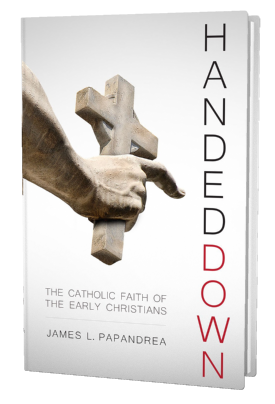 Most Protestants believe that there s a great contrast between modern Catholicism and first-centuries Christianity. But in this exploration of history and early theological writings, Papandrea (a former Protestant minister) shows that there s actually a stunning similarity. In Handed Down: The Catholic Faith of the Early Christians, James L. Papandrea examines that most crucial era in the transmission of Christian truth: the time of the early Church.
Most Protestants believe that there s a great contrast between modern Catholicism and first-centuries Christianity. But in this exploration of history and early theological writings, Papandrea (a former Protestant minister) shows that there s actually a stunning similarity. In Handed Down: The Catholic Faith of the Early Christians, James L. Papandrea examines that most crucial era in the transmission of Christian truth: the time of the early Church.
During those few centuries following the apostolic age, the brilliant and holy pastors, teachers, and writers known as the Church Fathers took the gospel they received and developed the doctrines and practices that defined the Christian religion. And that religion of the Fathers continues today faithfully kept, vibrant and alive in the Catholic Church. The essence of Christianity is this: we hold fast to what we were given by those who came before us. From Jesus and the apostles to believers throughout history, God’s saving revelation has been proclaimed, preserved, and passed on, each generation not inventing the Faith for itself but staying true to the tradition it received. Papandrea demonstrates that the early Christians were decisively Catholic in how they acted and what they believed in, including:
The authority of the Church and Sacred Tradition in addition to Scripture
The sacraments, including the Real Presence of Christ in the Eucharist
An ecclesial hierarchy with priests, bishops, and a pope
A theology of salvation that included the importance of works and free will
Prayers and devotions to the saints and the Blessed Virgin Mary
More than a compilation of Patristic prooftexts (important though these are), Handed Down offers a fascinating window into the life of the early Church and the lessons it holds for us today.
It’s perfect for history-conscious Protestants looking for a friendly defense of Catholic belief, as well as for Catholics who want to deepen their connection with our forefathers in the Faith.
I’m using Gleam to help with the giveaway, which is cool because it allows you multiple entries for posting on Facebook, sharing on Twitter, etc. Click below to enter:
(If you’re reading this through email or RSS and don’t see the giveaway widget, click here.)
By entering this giveaway you agree to occasionally receive email updates from me—no spam, just updates about free books, cool links, and exciting news.
The winner(s) will be randomly selected next Friday and the books will be sent out, free of charge, shortly thereafter.
In the future I’ll be giving away more books and resources, sometimes multiple items per giveaway! So subscribe via feed reader or email to ensure you never miss your chance to win.
(Since I’m covering the shipping costs, only residents within the continental United States are eligible to win.)
The post Book Giveaway (10 copies): “Handed Down: The Catholic Faith of the Early Christians” appeared first on Brandon Vogt.





December 28, 2015
How to Easily Read the Whole Bible in 2016
As you prepare for the new year, why not commit to reading the entire Bible in 2016? It’s not as hard as you might think.
The Bible contains around 775,000 words. The average adult reads 250 words per minute. That means if you read the Bible for just 10 minutes per day, you’ll get through the whole thing in a year!
(For more stats, check out this cool online tool. You input your words-per-minute and it tells you exactly how long it will take you to read the Bible! Doesn’t have the Catholic deuterocanonical books, but cool nonetheless.)
Everyone can find 10 minutes in their day, whether early in the morning, during a lunch break, or before going to bed.
But after committing to reading the whole Bible, most people have two questions: which translation should I use, and how should I do it?
Which Translation to Use?
There are a few things to keep in mind with translations. First, make sure your Bible is complete. Protestant translations such as the New International Version (NIV), the English Standard Version (ESV), and the King James Bible (KJB) do not contain the seven deuterocanonical books that the Catholic Church accepts as Sacred Scripture. You’re going to want those books in your Bible (they’re really good!) so get a Catholic Church-approved translation.
Second, you want to make sure your Bible translation strikes a good balance between precision and readability. Avoid paraphrase translations, such as The Message. Instead, go with a more literal (i.e., “word for word”) translation that is still easy to read. Here are my personal recommendations, in order of preference. All of them have been officially approved by the Catholic Church for personal study:
Revised Standard Version – 2nd Catholic Edition (RSV-2CE) – This is the one I use, and it’s hailed by most Catholic Bible scholars I know. It offers a literal but still very readable translation.
New American Bible – Revised Edition (NAB-RE) – This is the translation used during the Mass, although it does contain some questionably translated passages and some dubious footnotes. But if you want to sync your reading to the liturgy, this is your best choice.
New Revised Standard Version (NRSV) – Solid translation although it contains “gender inclusive language”, changing “brothers” to either “friends” or “brothers and sisters” and removing instances of the divine “He”.
Douay-Rheims Version (DR) – This was the standard Bible for English-speaking Catholics from 1609 until the twentieth century. It’s a trusted version but some readers find it a bit turgid, similar to the King James Version.
You might also check out study Bibles that are specifically designed for a one-year reading plan. For instance, there’s the My Daily Catholic Bible (NAB) which divides all of Scripture into 365 segments, one for each day of the year. It features two small readings for each day, one from the Old Testament and one from the New Testament, along with an insightful quote from a saint. The best part is that the readings are all grouped together sequentially so you don’t have to flip back and forth each day between the Old and New Testaments.
There’s also the Catholic One Year Bible which uses the Catholic Living Bible translation, a less-then-literal translation but one that many readers find breezier and more accessible.
In the end, what matters most is that you find a translation you’ll actually read. If you pick one that is cumbersome or inaccessible, then it doesn’t really matter whether it’s accurate. Your best bet is to sample a few translations online and then choose one you feel most comfortable reading each day.
What’s the Best Plan?
Similar to the translation question, the answer here is whichever plan you’ll follow. Unfortunately, many people mistakenly start with Genesis and try to plow straight through to Revelation. That’s probably the worst plan. The problem is that some of the early Old Testament books are meticulous, such as Leviticus and Numbers, and most people get bogged down, wiping out before finishing even half the Old Testament.
What’s a better strategy? Follow a carefully designed reading plan that will serve you the right doses of Scripture at the right pace. Some of these plans alternate between Old and New Testament readings, while some also intersperse the Psalms throughout the year to add variation.
Here are some of my favorite Bible reading plans for Catholics. Choose your Bible, then choose one of the plans below and make 2016 the year you finally finish the whole Bible:
Read the Bible and the Catechism in a Year – This plan, created by the Coming Home Network, is definitely my favorite. Not only does it take you through the whole Bible (the Catholic Bible, including the deuterocanonical books), but it also gets you through the entire Catechism of the Catholic Church. Each day you read about three chapters of Scripture and fifteen paragraphs of the Catechism. It will take about 30 minutes each day. (Note: To get the PDF of this plan, you have to create a free account on the CHNetwork’s website.)
Dr. Mary Healy’s Read the Bible in a Year Plan – This plan was created by Dr. Mary Healy, a premier Catholic biblical scholar, and it’s great because it has you reading excerpts from the Old Testament, Psalms, and New Testament each day. That means when you get to the difficult Old Testament sections, you’ll still have the Psalms and New Testament to balance you out.
CatholicBibleInAYear.org Reading Plan – This one is similar to Dr. Healy’s plan except it gives you even more variety each day. You’ll read two Old Testament readings, one New Testament reading, and one psalm each day.
CatholicBibleInAYear.org Reading Plan – My friend Meg Hunter-Kilmer created this plan. As Meg explains, “This one still gets you through the whole Bible in a year (and the Gospels twice), but it goes chronologically through the Old Testament (more or less) with New Testament books and fun books like Ruth and Jonah interspersed throughout to mix things up. It also gives you a chapter of some poetic stuff every day instead of dragging you through Proverbs for 200+ days. This schedule is more user-friendly, more reasonable for those who haven’t read the Bible before, and can start any day of the year.” (Meg also has a really cool Bible timeline that she recommends you print and keep tucked in your Bible.)
My Personal Solution
I mentioned above that I prefer the Revised Standard Version – 2nd Catholic Edition (RSV-2CE) for Scripture study. But I also have a secret weapon: the Verbum Bible software.
I’ve written before about how amazing this is, calling it the most powerful Bible resource ever available. But it also makes it super easy to read the Bible in a year. Verbum comes with a built-in plan, right out of the box:
The best part about using Verbum is that the reading plan syncs across all of your devices. So you can read your daily passages on your computer, tablet, phone, or any other mobile device. It’s great for people like me who are constantly on the go and often forget to carry around a paperback Bible. Verbum also syncs your highlights and notes across all devices, so the reading experience is seamless.
The Verbum library packages can be pretty expensive—the cheapest base package is $233.
But if you’re just interested in reading the Bible, Catechism, and basic Church documents, check out the Verbum Catechism of the Catholic Church Collection. It’s only $49.95 and gives you lifetime access to the powerful Verbum software (the most important resource), along with the Revised Standard Version – Catholic Edition (RSV-CE) of the Bible, the Catechism of the Catholic Church, the lectionary (the readings used at Mass), the documents of Vatican II and the Council of Trent, and a few other resources. All of those documents can be accessed on the go, on any device you’re using. In my opinion, the cost of this software ($50) is more than worth it if it enables you to finish the Bible in a year.
(I should note that the Catechism of the Catholic Church Collection does not come with all the features of the Verbum software. It lets you read the Catechism and Bible, and create reading plans, notes, highlights, and a few other things. But if you want the complete set of powerful tools in Verbum, check out one of their library packages. With those you get the full power of the software along with tons of additional books, which really showcase the power of Verbum. I personally use Verbum Master and love tools like Clause Search and Bible Facts. If you use the code BRANDON at checkout, you’ll get 15% off any Verbum library—just not the Catechism collection. Also, full disclosure, I get a small commission if you purchase one of the Verbum libraries, but nothing if you purchase the Catechism collection. I just promote the Catechism collection because I think it’s a fantastic deal and the best way to get started with Verbum.)
So those are my tips and advice. Now a question:
Are you going to read the whole Bible in 2016?
Let us know in the comment box!
The post How to Easily Read the Whole Bible in 2016 appeared first on Brandon Vogt.





December 16, 2015
This 2-Minute Video on JPII Defeating Communism Will Give You Chills
One of history’s greatest examples of the triumph of spiritual power over violence and oppression is vividly recounted in “Liberating a Continent: John Paul II and the Fall of Communism”, a new documentary film that poignantly captures the intricate role played by John Paul in the fall of Communism and the liberation of Central and Eastern Europe.
Featuring the unique insights of intellectual and cultural leaders such as papal biographer George Weigel, esteemed Polish historian Norman Davies, Supreme Knight Carl Anderson, John Paul’s lifelong assistant Cardinal Stanislaw Dziwisz, and Solidarity founder Lech Walesa–this inspiring film gives an inside look at the improbable downfall of one of history’s most brutal regimes.
The post This 2-Minute Video on JPII Defeating Communism Will Give You Chills appeared first on Brandon Vogt.





December 15, 2015
My New Podcast Show with Bishop Robert Barron!
Exciting news! Today marks the launch of “The Word on Fire Show”, a new weekly podcast where Bishop Robert Barron and I discuss faith and culture.
Learn more about the podcast and hear the first episode at WordOnFireShow.com.
We’re planning to release a new episode each Tuesday. The first episode, which you can listen to below, is titled “Pope Francis and His Four American Heroes”:
http://WordOnFireShow.com/episode1/
Podcasting has exploded in popularity over the last couple years (thank, in part, to hit shows like Serial). With podcasts, people can listen on the go, wherever they are, whether in the car, in the gym, or while doing chores around the house. They don’t need to be in front of a computer, or even have internet access.
Here are some frequently asked questions about podcasts in general, and our new show in particular:
What is a podcast?
A podcast is essentially a radio show that you can listen to any time you want. It lets you absorb audio content on your own schedule instead of requiring you to tune in at a particular time. Podcasts feature regular episodes that typically debut daily, weekly, or monthly.
Podcasts are perfect for commuting to work, long road trips, while you’re exercising, or when you need something to occupy you while doing mindless tasks.
How do I listen or subscribe?
There are two ways to hear “The Word on Fire Show”: streaming or subscribing.
First, you can always visit WordOnFireShow.com and click the “Play” button to hear the latest episode (this is called streaming.) You can stream all past episodes here.
But to make sure you don’t miss new episodes, a better option is subscribing. Subscribing to the podcast is free and easy, and it sends each episode directly to your device as soon as it goes live. Also, it allows you to hear the show even when you don’t have an internet connection (streaming requires internet access and can eat up your cell phone data.)
Here are step-by-step instructions on how to subscribe to “The Word on Fire Show”:
How to subscribe on an iPhone or iPad
1. Open up the “Podcasts” app (which should be already installed on your device, by default)
2. On the bottom right, click the “Search” icon.
3. In the search box, type in “Word on Fire.”
4. In the “Podcasts” area (not the “Podcast Episodes” area), tap on the “Word on Fire Show” icon.
5. Click the purple “Subscribe” button.
6. That’s it! Now you’ll receive new episodes from the show.
Here’s a brief video tutorial showing these steps:
How to subscribe on an Android phone
1. Download the Stitcher app through Google Play.
2. In Sticher, search for “Word on Fire Show”.
3. Click the plus sign (+) to add it to your Favorites List.
4. Go to the Favorites List.
5. Click the gear icon in the upper right corner to have Stitcher download new episodes automatically.
How to subscribe on a computer (PC, Mac, laptop, etc.)
1. Download the free iTunes software here: https://www.apple.com/itunes/download/
2. Open iTunes and click “File >> Subscribe to Podcast”.
3. Type in this URL and then hit “OK”: http://wordonfire.libsyn.com/rss
4. That’s it! You’re now subscribed and will receive all new episodes.
Can I call in and ask questions?
“The Word on Fire Show” isn’t a live call-in show, which means we don’t accept phone calls, but you can record a voicemail question at AskBishopBarron.com and submit it to us.
During each episode, we’ll choose a question, play it during the show, and Bishop Barron will reply.
To submit your question, all you need is an Internet connection and a microphone:
The post My New Podcast Show with Bishop Robert Barron! appeared first on Brandon Vogt.





December 11, 2015
Book Giveaway (10 copies): “To The Martyrs” by Cardinal Wuerl
“Find out how much God has given you and from it take what you need; the remainder is needed by others.” — St. Augustine
Since I’ve built up a large collection of extra books and resources, every week I give some away absolutely free, no strings attached. Each giveaway lasts seven days with a new one beginning every Friday. You can enter any time during the week. Check out my past giveaways here.
Thanks to Emmaus Road Publishing, today I’m giving away TEN copies of Cardinal Donald Wuerl’s new book, To the Martyrs. Learn more and enter below!
To the Martyrs: A Reflection on the Supreme Christian Witness
by Cardinal Donald Wuerl
Emmaus Road Publishing, 136 pages, hardcover
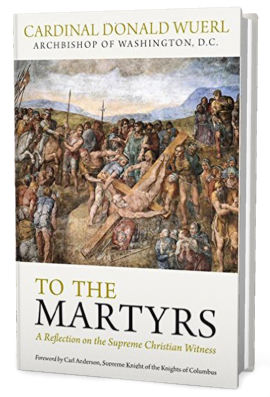 In many societies today, the utterance of a simple phrase, “I am a Christian,” is a crime punishable by death. So widespread is this persecution that Pope Francis called it a “third world war, waged piecemeal…a form of genocide.”
In many societies today, the utterance of a simple phrase, “I am a Christian,” is a crime punishable by death. So widespread is this persecution that Pope Francis called it a “third world war, waged piecemeal…a form of genocide.”
In To the Martyrs: A Reflection on the Supreme Christian Witness, Cardinal Donald Wuerl urges solidarity with today’s persecuted Christians and recounts the recurrence of martyrdom throughout Church history.
His Eminence’s poignant insight into the spirituality of martyrdom will challenge all Christians to courageously emulate the steadfast commitment of those who have followed Christ—even unto death.
I’m using Gleam to help with the giveaway, which is cool because it allows you multiple entries for posting on Facebook, sharing on Twitter, etc. Click below to enter:
(If you’re reading this through email or RSS and don’t see the giveaway widget, click here.)
By entering this giveaway you agree to occasionally receive email updates from me—no spam, just updates about free books, cool links, and exciting news.
The winner(s) will be randomly selected next Friday and the books will be sent out, free of charge, shortly thereafter.
In the future I’ll be giving away more books and resources, sometimes multiple items per giveaway! So subscribe via feed reader or email to ensure you never miss your chance to win.
(Since I’m covering the shipping costs, only residents within the continental United States are eligible to win.)
The post Book Giveaway (10 copies): “To The Martyrs” by Cardinal Wuerl appeared first on Brandon Vogt.





December 9, 2015
How to Give a Talk like Fulton Sheen

Although most people cite Martin Luther King Jr. and Billy Graham as the greatest preachers of the twentieth century, Fulton Sheen is right there with them, in my book. Talk to anyone who heard him on TV or the radio and they’ll be quick to agree. They’ll gush over his magnetism, aura, tone, and rhythm, all of which were captivating—just stream some of his talks online and you’ll see.
Anyone who speaks publicly to large groups—teachers, politicians, priests, deacons—can learn a lot from Archbishop Sheen, who died on this date (December 9) in 1979.
Sheen never wrote a book on preaching. However, thanks to an inquisitive nun, we do have some of his advice.
In 1979, while in a restaurant waiting for guests to arrive, Sister Ann Edward asked Archbishop Sheen for a few hints about presenting a talk. As he spoke, she furiously took notes, adding numbers when she typed up the results. Here are the tips he gave:
1. Voice tone: Plato recalls tone three or four days after hearing a talk. It’s the tonal quality that strikes an audience.
2. When listening to a speaker, count the words on each breath. Indicate each word by a dash, and each pause by a stroke. If it’s -/-/, it’s dull, flat and stale.
3. Avoid a pulpit voice. Be natural. As Disraeli said, “There’s no index of character as sure as voice.”
4. Learn the value of pauses. Never for their own sake, but for emphasis or to allow the thought to sink into the audience. They need time for digestion.
5. A whisper can have more value than a shout. Macaulay said of Pitt, “Even a whisper of his was heard in the remotest corner of the House of Commons.”
6. If there’s a commotion, disturbance, or latecomers, do not raise the voice; lower it and the audience will try to catch the whisper.
7. The audience is infallible in judging if a voice is artificial or natural.
8. Let a first sentence be interesting. Do not state the obvious, e.g. “Today we celebrate a 25th anniversary.”
9. Only nervous speakers need water.
10. If brevity is the soul of wit, the secret of oratory is “know when to quit.”
11. Before beginning, pause a few moments. As a mother cannot forget the child of her womb, we can’t forget the child of our brain.
12. Start with a low voice.
13. Audience needs a come-on; feel superior, not timid or obsequious.
14. To begin with, have a story where you came out second best.
Summary
1. Talk naturally.
2. Plead vehemently
3. Whisper confidently.
4. Appeal plaintively.
5. Proclaim distinctly.
6. Pray constantly.
— Thomas C. Reeves, America’s Bishop: The Life and Times of Fulton J. Sheen (San Francisco: Encounter Books, 2001), pp. 381-382.
(Image credit: A Catholic Life)
The post How to Give a Talk like Fulton Sheen appeared first on Brandon Vogt.





Elements of the Catholic Mass: Beautiful New YouTube Series

A new YouTube series from Mundelein Seminary’s Liturgical Institute unveils the Mass in elegant ways. “Elements of the Catholic Mass” is designed to help the faithful better appreciate the beauty of the Mass.
The program consists of high quality, weekly short videos of 2-5 minutes. All the videos are available online for free, and are ideal for personal formation or for groups.
Check them out below and download free study guides for each episode at ElementsOfTheCatholicMass.com.
The post Elements of the Catholic Mass: Beautiful New YouTube Series appeared first on Brandon Vogt.





Brandon Vogt's Blog
- Brandon Vogt's profile
- 75 followers




